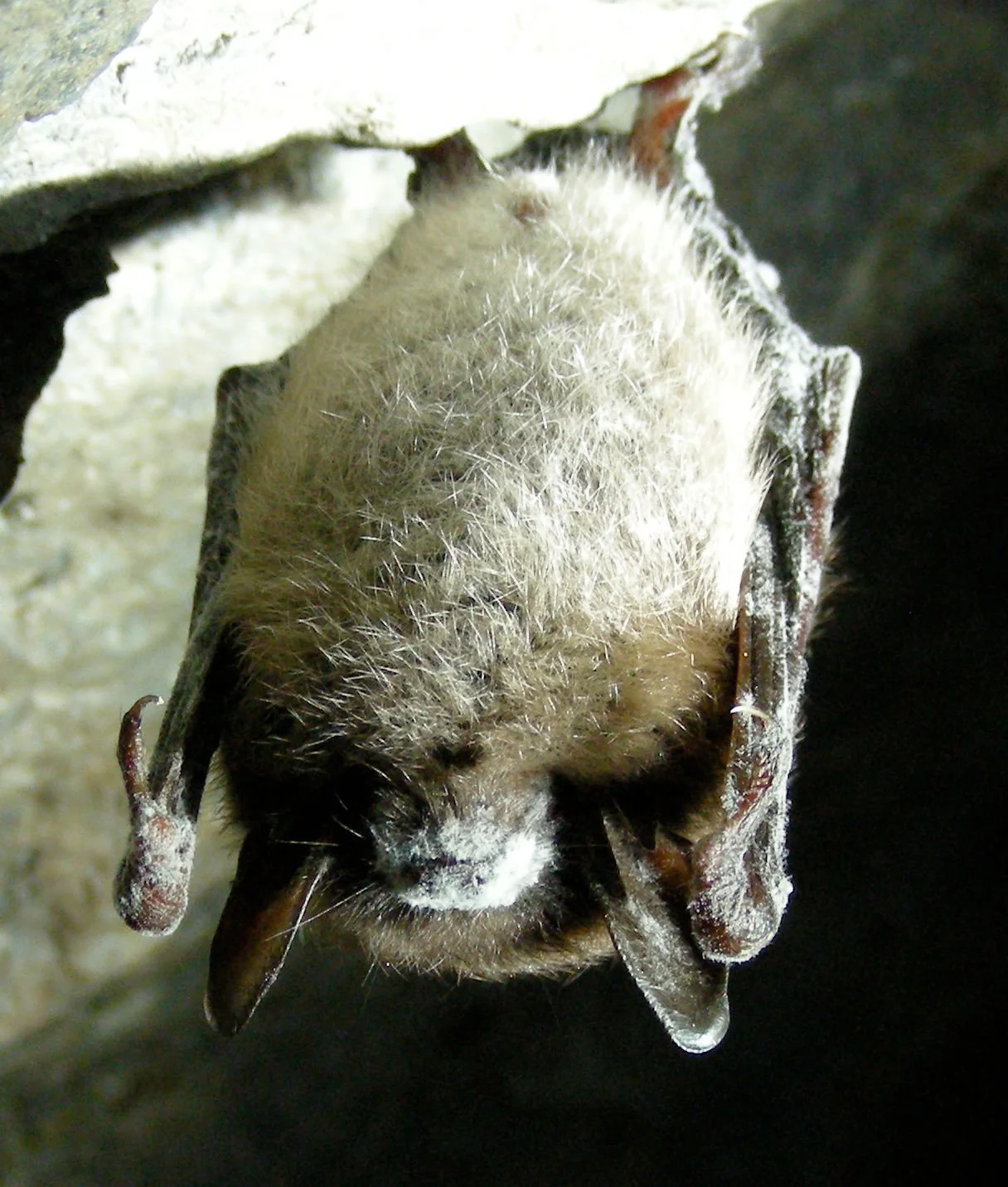White-nose syndrome is a fungal disease that has decimated bat populations in North America.
Little brown bat with white-nose syndrome in Greeley Mine, Vermont, March 26, 2009. Marvin Moriarty/USFWS
Introduced to a cave in upstate New York in 2006, white-nose syndrome has spread rapidly across the continent, causing catastrophic declines in bat populations. In some areas of the Northeast, bat populations have declined by 95-99%.
The little brown bat, once one of the most common species in North America, is now under review for potential listing under the Endangered Species Act.
“The severity of the impact of this disease on bat populations is staggering. We found that nine out of 10 bats of the most vulnerable species are now gone.”
How Operation Fat Bat can help:
Bats are more likely to survive hibernation after being infected by white-nose syndrome when they are fatter.
The more insects a bat can eat before going into hibernation, the fatter they will be!
Insects are drawn to UV lights at night.
By installing UV lights near the entrances to caves where bats hibernate, it may be possible to fatten up the bats and increase their survival.
This is a low-cost and easily replicable project, so if successful it could be easily implemented on a large scale.
Could help the bats that survived white-nose syndrome recover much faster than would otherwise be possible.
Operation Fat Bat at work in Michigan’s upper peninsula.



